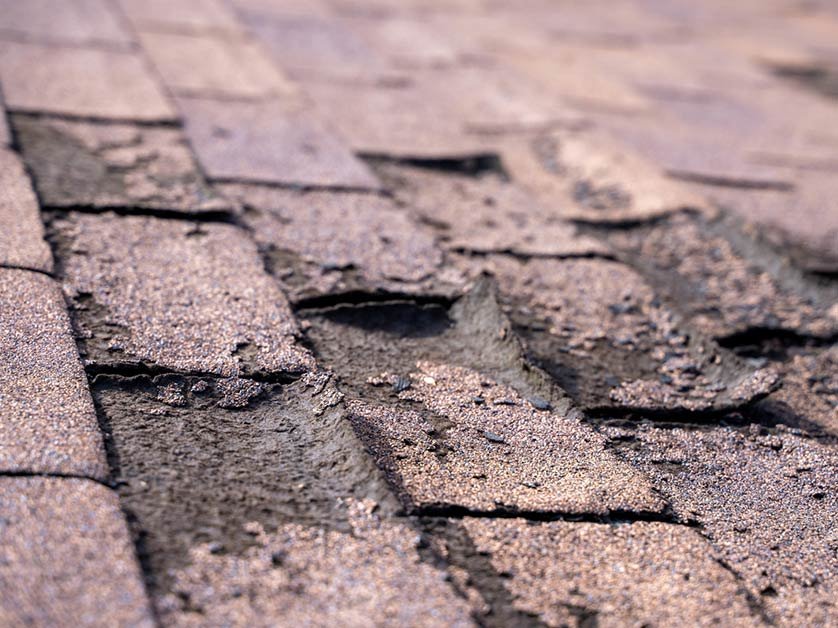Asphalt shingles, like most roofing materials, can have issues that can manifest at any time over their expected life span. One of the things you have to keep an eye out for is the loss of their protective granules. Read on to find out why it happens and whether it is considered an issue worth looking into.

Understanding Granule Loss in Asphalt Shingles
Granule loss happens when the small, gritty particles affixed to the surface of asphalt shingles start to come off. These granules play a pivotal role in protecting the shingle from UV rays, adding color and dimension to its appearance, and providing fire resistance. While some degree of granule loss is normal over the lifespan of your shingles, excessive loss can be an indication of a problem.
Signs of Excessive Granule Loss
Understanding the signs of excessive granule loss is essential for homeowners. These can include:
- Bare spots on shingles where granules have fallen off.
- Granules accumulating in gutters or at the bottom of downspouts.
- A significant discrepancy in color or texture on various parts of the roof.
Factors Contributing to Granule Loss
Several factors can contribute to the acceleration of granule loss in asphalt shingles:
- Age of the Roof. Over time, the bond between the granules and the asphalt shingle weakens due to repeated exposure to the elements, leading to granule loss.
- Physical Damage. Hail, fallen branches, or walking on the roof can dislodge granules.
- Manufacturing Defects. Sometimes, the issue can stem from the manufacturing process itself, leading to premature granule loss.
- Poor Ventilation. Inadequate attic ventilation can cause heat buildup, prematurely aging your shingles and contributing to granule loss.
Is Granule Loss a Serious Issue?
It is crucial for homeowners not to discount granule loss as a mere cosmetic issue. While minor granule loss is normal, significant loss can expose the underlying bitumen layer of the shingle to sun and rain, accelerating degradation. This can lead to:
- Reduced effectiveness in protecting your home from water ingress.
- Shortened lifespan of your shingles and, by extension, your roof.
- Increased susceptibility to further damage, both from the environment and physical impacts.
Mitigating Granule Loss
There are several steps you can take to mitigate granule loss:
- Regular Inspections. Conduct or hire a professional to perform regular roof inspections, especially after severe weather conditions.
- Proper Maintenance. Keep your gutters clean and ensure your attic is well-ventilated to prevent excessive heat buildup under your shingles.
- Prompt Repair or Replacement. Addressing small issues promptly can prevent more significant granule loss and extend the life of your roof.
While some granule loss in asphalt shingles is to be expected, recognizing when it becomes a significant problem is essential for maintaining the health of your roof. By understanding the causes, signs, and remedies for granule loss, you can take proactive steps to preserve your roof’s life span. Northeast Gutters and Remodeling remains committed to assisting you in this endeavor, ensuring your roof remains in optimal condition for years to come. Call us now at (860) 899-7878, or fill out our contact form to schedule an appointment.